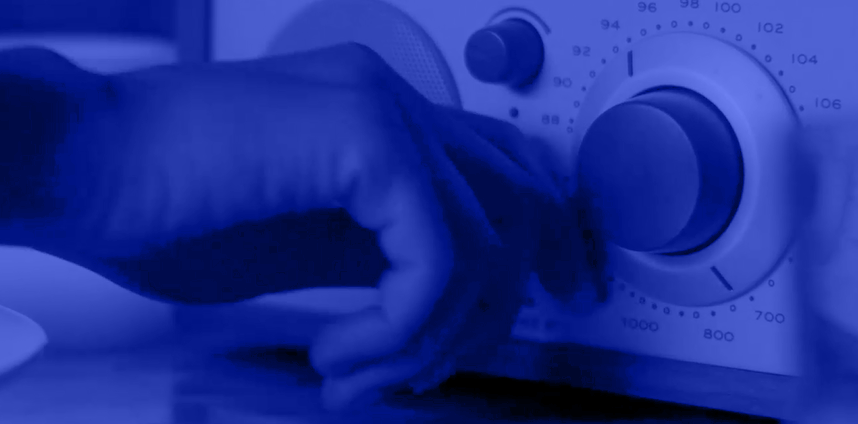Putting a Value on Trust and Love in Today's Media Environment

Consumers are consciously curating their media choices, migrating towards subscription-based platforms with limited ads and to media brands they trust. At the same time, advertisers are stepping up efforts to place their brands in trusted environments. This has created a challenge for media brands seeking sponsors and advertisers seeking to build an opt-in audience and to market themselves as trusted. I discussed this with Meg Goldthwaite, CMO of NPR, and Gina Garrubbo, who heads up sponsorships via subsidiary National Public Media (NPM).
E.B. Moss: Meg, you're fairly new to NPR. How are you approaching marketing a mature brand in today's challenging environment?
Meg Goldthwaite: My job is to help people understand exactly what NPR does for them. Once people know NPR, they love us, but our challenge is to make sure that more people know about us. "Favorability" we knock out of the ballpark on a regular basis. "Familiarity" is where we're focused. The good news is that in the last year that's just grown in leaps and bounds. We were just named EquiTrend News Service Brand of the Year and also the Most Trusted brand and Most Loved brand [Harris Poll EquiTrend Ranking 2017].
Listen to the complete interview here on the Insider InSites podcast.
E.B.: How do you think NPR earned that [trust]?
Meg: We're loved because people can trust us for independent journalism that's not just national. Though we are National Public Radio, our news really comes from everywhere in the country. So along with the national aspect, and certainly the global aspect of our reporting, what makes us unique is the local journalism by and across our member stations.
E.B.: The head of NPR News, Mike Oreskes, touts your local journalism for helping NPR have a finger on the country's pulse. For example, by knowing what is going on at the community and state level, he said NPR listeners during the election cycle were probably not as surprised at the national results as some of mainstream listeners may have been. To me, that was very telling.
Meg: Exactly. We represent voices all around the country, because we're stationed all around the country, and our member stations [and international contributors] help us take a global story and make it personal, and a local story and make it national. That's unique about our brand.
E.B.: Gina, I hear sponsors are flocking to NPR, and that's some of the good news. But, how do you grapple with the bad news in finding sponsorships -- brands' concerns in today's political climate about being associated with a news product or even a newsmagazine in general?
Gina Garrubbo: NPR's audience has actually never been as big: our news magazines are up 15% year over year on Morning Edition and 23% on All Things Considered. Sponsors understand the unique relationship that NPR has with its listeners in as much as listeners trust the less sensational reporting -- and that it rubs off on the corporations that support NPR and its efforts to be fair and open! We call that "the halo effect." Plus, it's a very important time for news and to hear all voices. So, more sponsors are definitely flocking to NPR across all our platforms [and they're] benefiting from the appreciation that the audience has for their sponsorship and support. I've been in this business all of my adult life and worked for some pretty amazing brands, but NPR really stands alone in this.
Meg: I'd add that despite the negative news cycles that are out there I'm encouraged by the number of people tuning in to find out what the facts are and really get themselves educated. We're hitting 30 million listeners a week ... so the reach that we're achieving with quality journalism says a lot for our brands. This is particularly important because what you see so often in for-profit media companies are these things called the "bubbles" people live in, or "I only want my news with a certain slant and so I'm only going to get my news from a certain channel." When I live in a bubble I'm not hearing all sides. We see our mission as popping those bubbles and feeding different sides so the consumer really gets all angles of a story. [There are even apps to help you burst your bubble!]
E.B.: So, part of the trust is that people hear local angles, and familiarity helps create trust, and it feels like a community. Which brings us to the love factor. How do you market love and trust as brand elements?
Meg: What is unique about NPR is the way we tell our stories. We go deep and look at angles that others may not and take the time we take to explain things. The number of times people pull up to their garage and stay in their car an extra four or five minutes so they can hear how the story ends is testament to that love. In the not so distant past people just had to hear what Walter Cronkite had to say about the world. I see NPR and member station journalists as being that Walter Cronkite. What's also important to being loved and trusted is to be dependable and be everywhere. I can ask Alexa to tell me the news and it's going to play NPR. I can be in my car and tune in my local member station. Or, I can consume our podcasts and news magazines by livestreaming or through our app.
E.B.: Gina, being loved and being trusted seems like it's kind of hard to measure, and yet you have empirical data on that. Tell me about that and how you leverage that with sponsors.
Gina: The EquiTrend study has definitely put NPR on the map for the past three years as a most popular and trusted news service, but we also do quarterly research studies across all our platforms showing increase in brand awareness and intent to purchase. Our biggest sponsor categories -- financial, technology, automotive -- really care about trust and credibility in terms of delivering their message, so [the research] has been extremely well received, but actually not surprising. Many of them know over the years the halo they get by supporting NPR. There have also been a number of studies showing 18-34 year olds appreciate authenticity and gravitate to authentic voices. But never before have audiences [overall] craved such authenticity, and never before have brands been so judged by consumers who have access to all kinds of information -- from brand practices to ethics to values. So, I don't think there's ever been a more important time for NPR to get the validation of the trust and love from consumers.
Meg: When we look at the [audience] growth Gina mentioned before ... it's coming from younger and more diverse audiences. It's wonderful to bring new people into the conversation, because that makes our product better. The more people we can educate and share and bring on this mission that's so important -- challenging and invigorating individuals with a deeper understanding and appreciation of events and culture -- [the better]. Nobody other than NPR is suited to do that.
E.B.: Well put. I can see why there's a halo effect.
This article was edited for clarity. To hear more from Gina -- from her work in developing the first-ever guidelines for digital advertising to marketing to women -- and from Meg on her vision for leveraging the Golden Age of Content and reaching NPR listeners across multiple platforms, listen to this episode of the Insider InSites Podcast.
Image at top courtesy of NPR.
Click the social buttons above or below to share this story with your friends and colleagues.
The opinions and points of view expressed in this content are exclusively the views of the author and/or subject(s) and do not necessarily represent the views of MediaVillage.com/MyersBizNet, Inc. management or associated writers.


